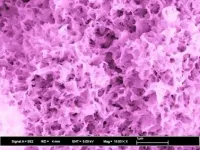Ischemic stroke occurs when a clot forms in a vessel supplying blood flow to the brain. On average, someone in the United States has a stroke every 40 seconds, and ischemic stroke is the fifth leading cause of death in the U.S. As assessment tools, treatment protocols and overall care for acute ischemic stroke have evolved in recent years, best practice in nursing for care of the patient with a stroke continue to be revised and updated. Stroke care is increasingly complex, and nurses who care for stroke patients are expected to maintain levels of competency in both the acute and recovery care phases of patient care.
Nursing during emergency medical services/emergency care (Prehospital and Acute Phase of Care), Susan Ashcraft et al.
Emergency care for a patient with a suspected stroke centers around the "time is brain" principle due to the importance of quickly identifying patients with a suspected ischemic stroke to prevent potentially irreversible damage to brain tissue. This scientific statement recognizes the importance of the nurse's role in recognition of typical and atypical symptoms of stroke and prompt activation of the stroke response system.
The "D's of Stroke Care" are identified as significant steps in the diagnosis and treatment of stroke. The steps outlining fundamental points where nurses facilitate time-sensitive care are:
Detection - Nurses are key to community education programs that teach risk factor awareness and recognition of early stroke warning signs. Events that target high-risk groups are especially important. Dispatch - Emergency dispatch personnel are often the first point of contact for someone having a stroke or someone witnessing the stroke. Appropriate training will include recommended prehospital triage, including asking when the patient's "last known normal (LKN)" was. This critical variable indicates when the person was last known to be well and can help determine appropriate routing of the patient for urgent treatment. Delivery - Comprehensive assessment of a suspected stroke patient by emergency services personnel, including vital signs, current medications list, family and witness contact information, enable emergency department staff to make treatment decisions more efficiently. Door - Nurses are often the link between the prehospital personnel and the emergency department team. Communication is critical to establish appropriate triage and reduce the time it takes for a patient to receive treatment. Mobile stroke units, ambulances equipped with specially trained staff and tools to provide care while en route to the hospital, can improve patient outcomes due to the ability to perform prehospital imaging, diagnosis and treatment. Data - The arrival time of a patient at the emergency department or the documented time of arrival of a mobile stroke unit is an important data point for tracking time-sensitive metrics to determine processes and options to treat a patient with ischemic stroke. Stroke screening and triage scoring systems conducted by triage nurses help quickly determine the severity of a patient's condition and the appropriate resources needed. Decision - Updated AHA recommendations reflect a quicker patient evaluation timeframe; the goal is to begin stroke treatment within 30 minutes after arrival at the hospital. To facilitate such timing, activation of a stroke response team can be initiated by ambulance personnel or immediately after the triage assessment at the time of patient arrival. Drug/Device - Treatment with clot dissolving medications, as well as appropriate patient monitoring during administering of the medications, are detailed. Disposition - Nursing interventions during transitions, such as when a patient leaves the emergency department to be transferred to an intensive care unit or stroke care unit, can successfully improve stroke outcomes. An emergency department code stroke pathway chart illustrates the key nursing responsibilities and sequence of care during this acute phase. "Stroke care has become increasingly complex as reperfusion dominates our treatment protocols, demonstrating the intensity of nursing responsibility and the expanded and critical role for nurses in providing stroke care," said Chair of the writing committee Susan Ashcraft, D.N.P., A.P.R.N., FAHA, a neurocritical care clinical nurse specialist at Novant Health in Charlotte, North Carolina. "Nurses are empowered leaders, facilitating change through designing and implementing improvements in the delivery of stroke care. In addition, our communities continue to demonstrate disparities affecting access to emergency stroke care, requiring nurses to take an active role at the local, state and regional levels to address these needs.
Statement co-authors are Susan E. Wilson, D.N.P., A.P.R.N.; Karin V. Nyström, M.S.N., A.P.R.N., FAHA; Wendy Dusenbury, D.N.P., A.P.R.N., FAHA; Charles R. Wira, M.D., FAHA; and Tamika M. Burrus, M.D. Author disclosures are listed in the manuscript.
Nursing care throughout endovascular and intensive care unit treatment (Endovascular/Intensive Care Unit-Postinterventional Therapy), Mary L. Rodgers, et al.
Nurses serve in a critical role during a patients' stroke treatment by providing communication and care prior to, during and after medical procedures. As stroke treatments and research have evolved, updated nursing procedures in this statement address current evidence, potential complications and clinical practice strategies to ensure positive patient outcomes during the procedural phase of care.
"Acute ischemic stroke patients are vulnerable, and communication among various disciplines in the treatment and care of this population is critical," said Mary L. Rodgers, D.H.A., A.N.P., C.N.S., R.N., chair of the statement writing committee, quality manager for the VA Western New York Healthcare System in Buffalo, New York, and a reviewer for The Joint Commission. "Critical assessments must be done to care for and intervene for this at-risk patient population. These can help to safeguard the patient and improve patient outcomes, thus increasing the opportunity to maintain quality of life after a stroke."
Treatment for ischemic stroke is clot removal so that blood flow may return to the section of the brain affected. Intravenous thrombolysis--administering medication through an IV to dissolve the clot--is the standard treatment, and in 2015, mechanical thrombectomy became an additional standard of care in the U.S. for some patients with strokes caused by large blood clots. During mechanical thrombectomy, which may or may not follow intravenous thrombolysis treatment, a stent retriever device is inserted via a catheter through an artery in the groin up to the blocked artery in the brain. Once in place, the stent opens and retrieves the clot.
"During treatment, the intradisciplinary team needs to know if the patient is improving, staying the same or decompensating," added Rodgers. "Nursing care and identification of patient changes is key during this time. Nursing assessments and interventions assist the team in critical decisions related to treatment efficacy and the needs of the patient."
Throughout stroke procedures, interventional nurses anticipate patient needs, identify any potential complications and maintain patient safety. Their responsibilities encompass all phases of treatment care:
* Prior to the procedure - While no standard currently exists for how frequently nurses should repeat vital sign and neurological assessments, it is reasonable to do so at least every 30 to 60 minutes prior to mechanical thrombectomy procedures, and more often when intravenous clot dissolving medication has been administered. Patient evaluation using the National Institutes of Health Stroke Scale score, a systematic assessment tool that measures stroke-related neurologic deficit, is indicated. Patients with a high score, decreased mental status, a stroke in the back area of the brain, and/or existing heart or lung disease are more likely to require extra support and intubation during the procedure.
* During the procedure - Using universal protocol, nurses monitor patients by assessing vital signs, pain and anxiety, and levels of consciousness. The statement authors note that goals for blood pressure levels during mechanical thrombectomy and the optimal range for good patient outcomes are topics of ongoing research.
* Post procedure - Upon completion of a mechanical thrombectomy procedure, nurses will closely monitor patients for any immediate concerns at the site of the catheter. Current evidence also supports nurses completing a repeat neurological assessment on a patient immediately following the procedure, and to repeat the assessment every 15 minutes for the first two hours; every 30 minutes for the following six hours; and every hour for the next 16 hours.
When a patient with an acute ischemic stroke is treated with intravenous clot dissolving medication, with or without mechanical thrombectomy, they are vulnerable to developing complications that could lead to secondary brain injury and therefore typically require intensive monitoring in an intensive care unit (ICU). Recognition of post-procedure complications is necessary, as are timely and continuing neurological assessments, cardiac monitoring, vital sign checks, blood sugar monitoring and swallowing tests.
Statement co-authors are Elizabeth Fox, M.S.N., A.C.N.S, A.G.-A.C.N.P., C.C.R.N., FAHA, co-chair; Tamer Abdelhak, M.D.; Lauren M. Franker, D.N.P., A.P.R.N., A.C.N.P.- B.C.; Brenda Joyce Johnson, D.N.P., C.R.N.P.-B.C., A.N.V.P., FAHA; Christina Kirchner-Sullivan, D.N.P., A.C.N.P.-B.C., A.N.P.-B.C., S.C.R.N.; Sarah L. Livesay, D.N.P., R.N., A.C.N.P.- B.C., FAHA; and Franklin A. Marden, M.D., FAHA. Author disclosures are listed in the manuscript.
Nursing care for the patient after the acute care phase (Posthyperacute and Prehospital Discharge), Theresa L. Green et al.
Through evidence-based best practices, nurses can positively impact patient outcomes, decrease patient length of stay, costs and the likelihood of additional strokes.
"We know that what we do as nurses is important and crucial to the care of patients and families living with stroke, and this statement strengthens and supports the knowledge and provision of evidence-informed nursing care that will enhance and promote recovery and reintegration for patients transitioning across care environments to home and within their community," said writing committee Chair Theresa L. Green, Ph.D., R.N., FAHA, professor of rehabilitation nursing research at the University of Queensland in Brisbane, Australia.
Research confirms stroke patients have better outcomes and lower mortality rates when the medical facility has a specialized stroke unit. Of note, however, is that the research has not used consistent methodology and follow-up measures to assess outcomes, so more studies are needed. In the absence of a stroke unit, patients care consistent with best practice is important. Necessary stroke care assessments, screening tools and interventions outlined in the statement integrate evidence-based guidance from international organizations.
Highlights of key guidance include:
It is important to assess the swallowing ability, temperature and blood glucose levels of a stroke patient as early after a stroke as possible. Between 40% and 78% of patients with stroke experience swallowing difficulties. Glucose monitoring is necessary for patients who also have Type 2 diabetes, yet glucose monitoring is also important for patients who do not have Type 2 diabetes because patients with high blood sugar following a stroke have a three-fold higher risk of death. Better patient outcomes result when strategies are in place for early recognition and management of potential complications, including swallowing difficulties, pneumonia, cardiac complications, falls, psychological and neurological issues. One large study indicated one fourth of patients with stroke experienced at least one medical complication while hospitalized, leading to higher risk of adverse outcomes. Formal rehabilitation assessment by an expert is critical, and mobility rehabilitation is most beneficial at a level that considers the patient's anticipated benefits and tolerance. The rehabilitation needs of a patient transitioning out of the hospital are best determined based upon neurological, cognitive and physical assessments, in tandem with family/caregiver support and capacity. "There remains a lack of definition internationally about what specialized stroke nursing care entails," added Green. "There is also a lack of well-planned nursing research detailing the specific contribution nursing makes to patient and family outcomes following stroke, and whether it makes a difference to patient care and outcomes if nurses are certified in a subspecialty area such as stroke nursing. This statement provides much-needed guidance that can contribute to improved patient outcomes."
INFORMATION:
Statement co-authors are Norma D. McNair, Ph.D., R.N., FAHA, vice chair; Janice L. Hinkle, Ph.D., R.N., FAHA; Sandy Middleton, Ph.D., R.N., FAHA; Elaine T. Miller, Ph.D., R.N., FAHA; Stacy Perrin, Ph.D., R.N.; Martha Power, M.S.N., A.P.R.N., FAHA; Andrew M. Southerland, M.D., M.Sc., FAHA; and Debbie V. Summers, M.S.N., R.N., A.H.C.N.S.-B.C., FAHA. Author disclosures are listed in the manuscript.
All three scientific statements were prepared by volunteer writing groups on behalf of the American Heart Association's Council on Cardiovascular and Stroke Nursing and the Stroke Council, and they are endorsed by the American Association of Neuroscience Nurses. The statements reflect the most current updates to the American Heart Association's 2009 Scientific Statement, "Comprehensive Overview of Nursing and Interdisciplinary Care of the Acute Ischemic Stroke Patient."
Additional Resources:
Available multimedia is on right column of release link - https://newsroom.heart.org/news/updated-guidance-confirms-crucial-role-of-nurses-for-patients-with-acute-ischemic-stroke?preview=79469d26e839a6ea79aabe4fbb274f53
The Association receives funding primarily from individuals. Foundations and corporations (including pharmaceutical, device manufacturers and other companies) also make donations and fund specific Association programs and events. The Association has strict policies to prevent these relationships from influencing the science content. Revenues from pharmaceutical and biotech companies, device manufacturers and health insurance providers are available here, and the Association's overall financial information is available here.
About the American Heart Association
The American Heart Association is a relentless force for a world of longer, healthier lives. We are dedicated to ensuring equitable health in all communities. Through collaboration with numerous organizations, and powered by millions of volunteers, we fund innovative research, advocate for the public's health and share lifesaving resources. The Dallas-based organization has been a leading source of health information for nearly a century. Connect with us on heart.org, Facebook, Twitter or by calling 1-800-AHA-USA1.



